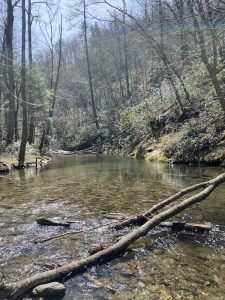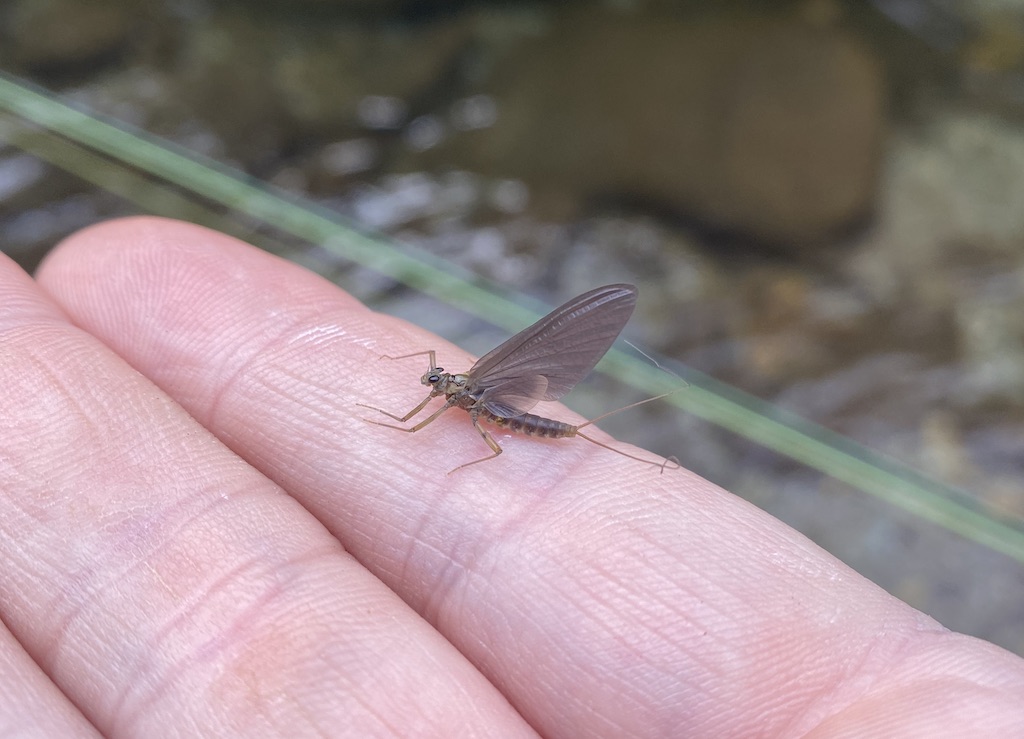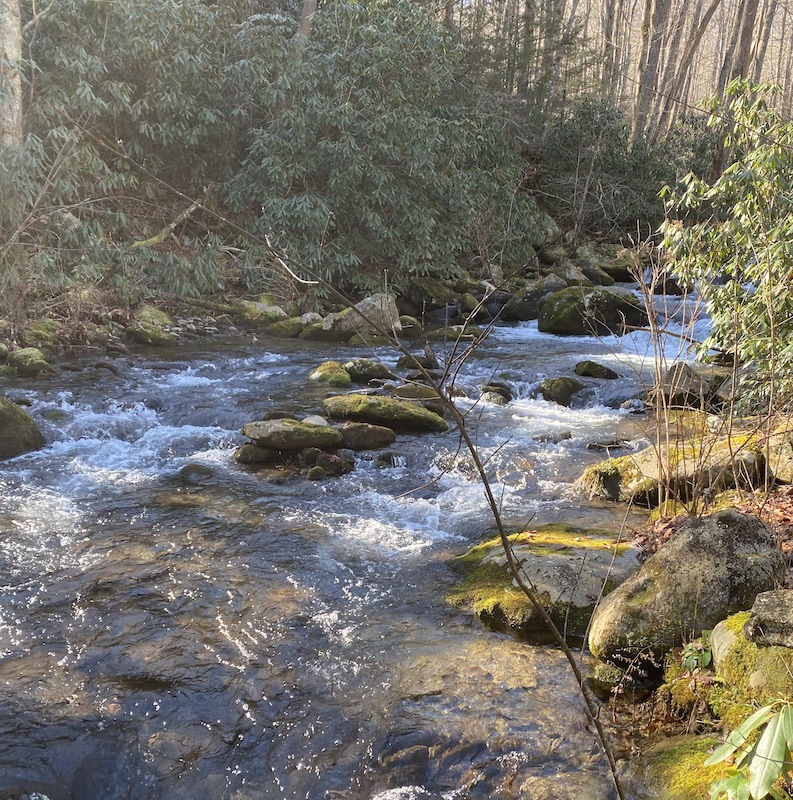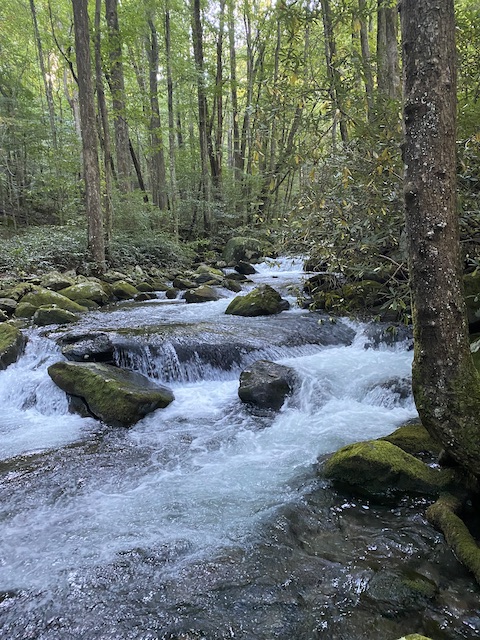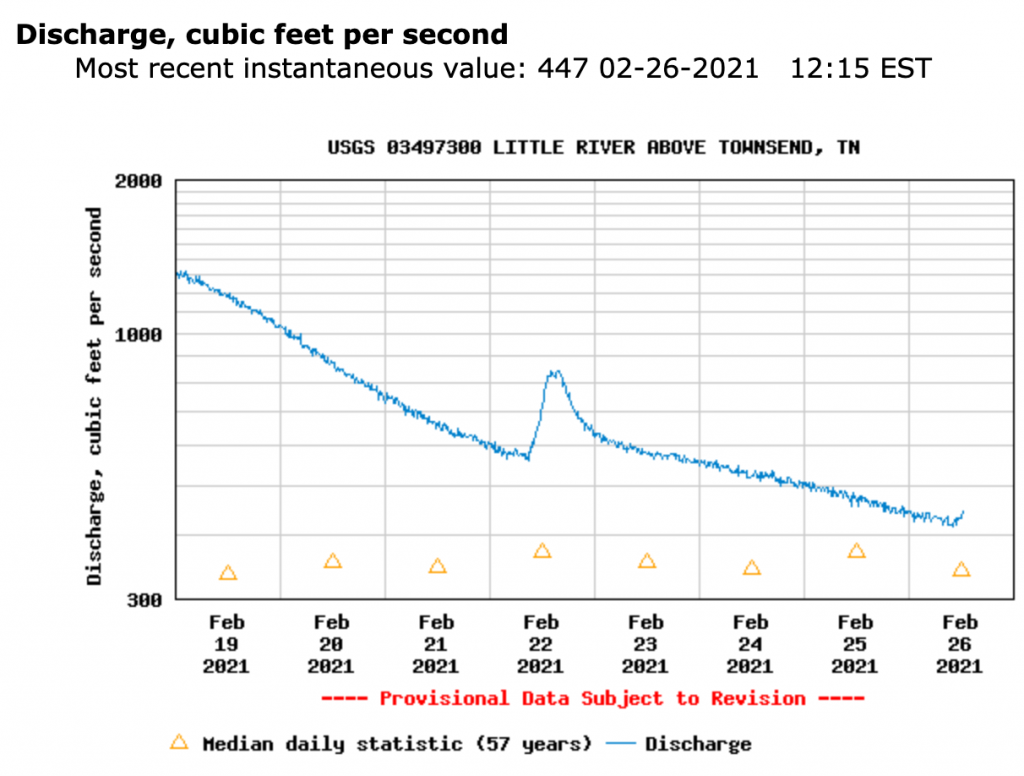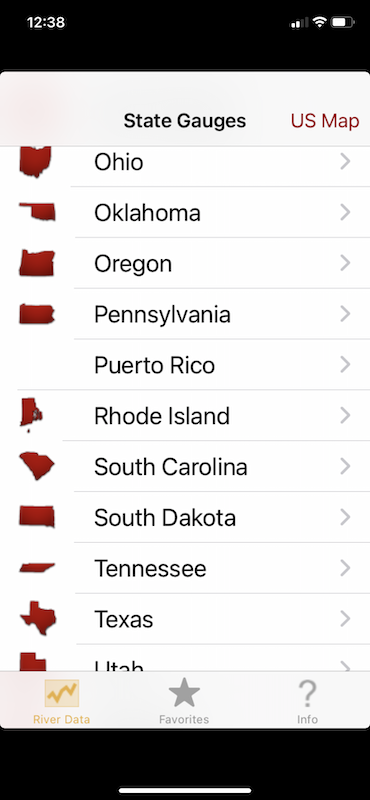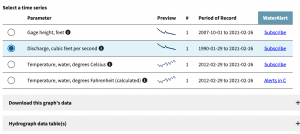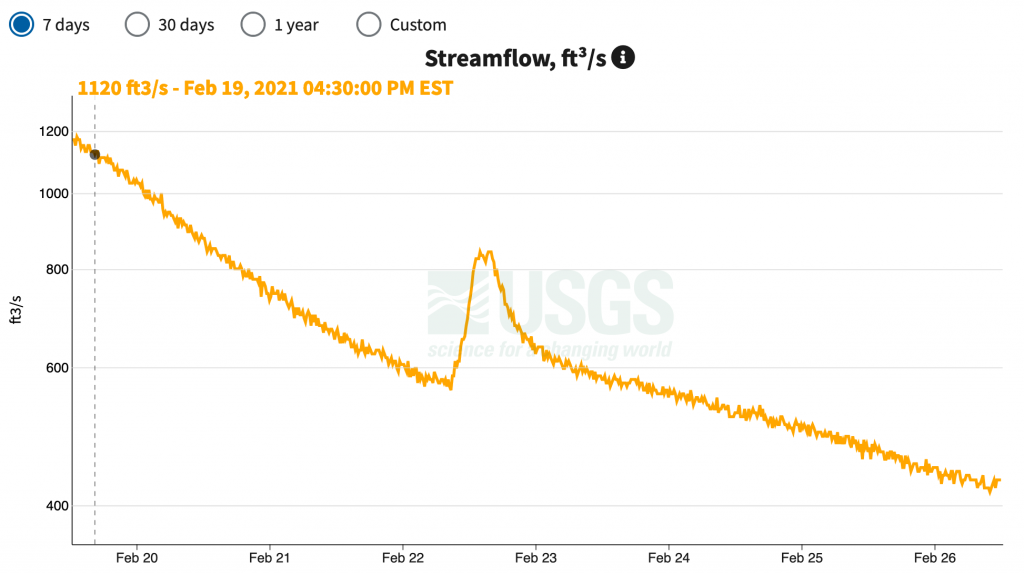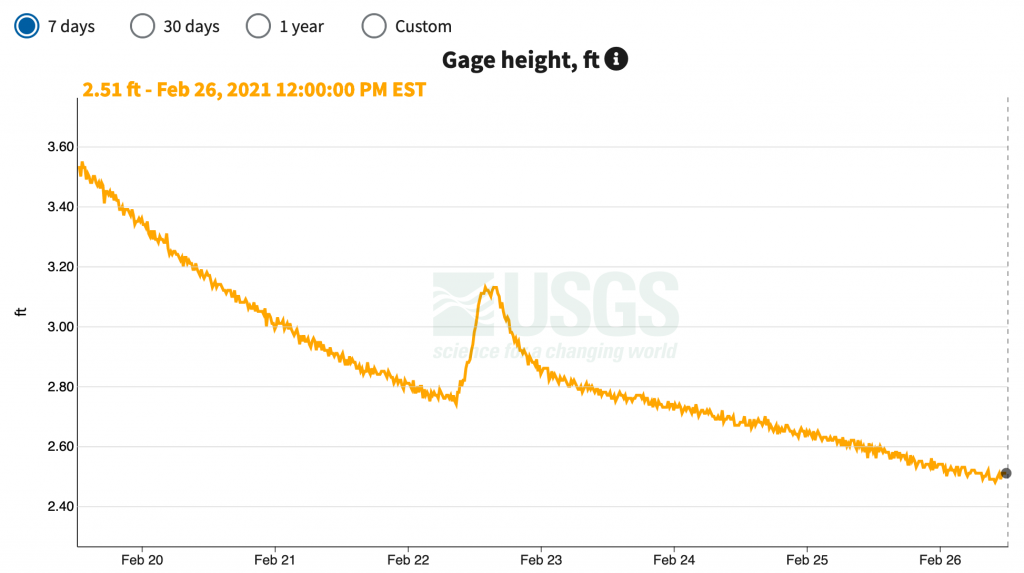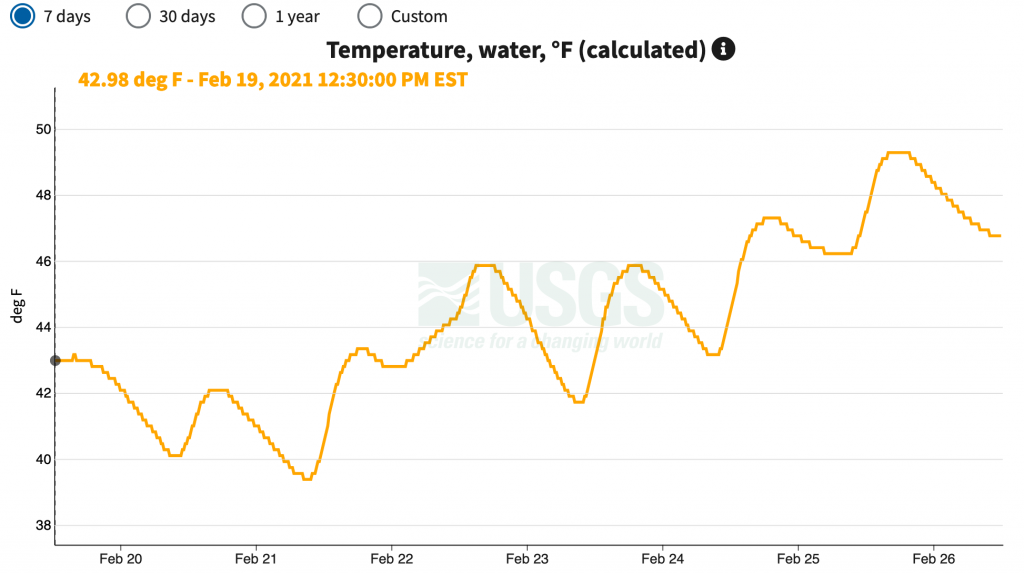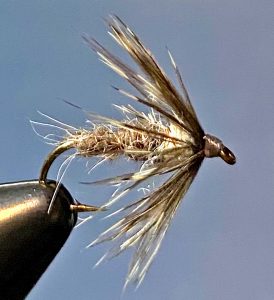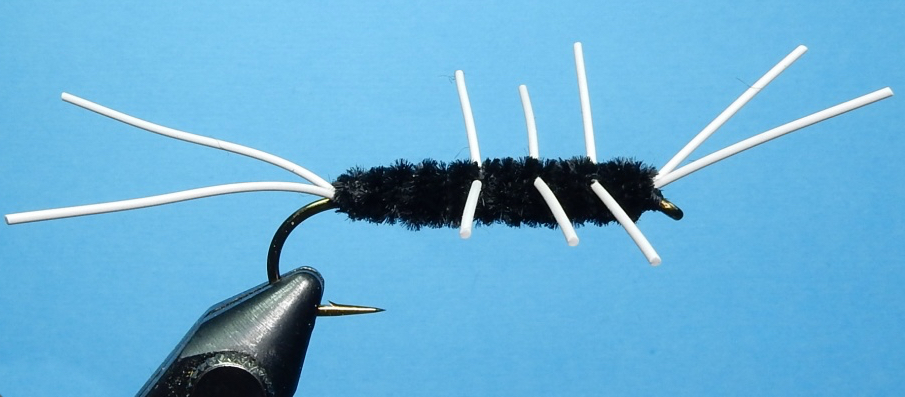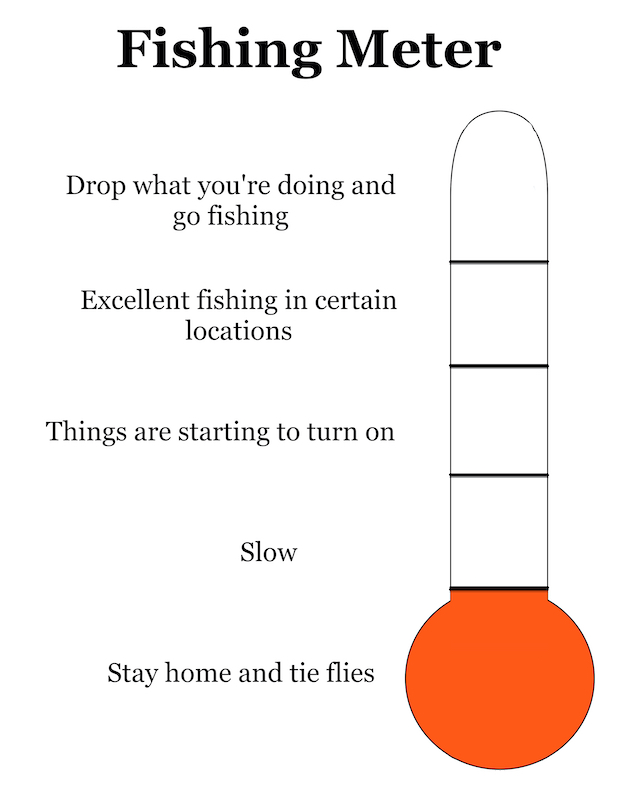
Location
Smoky Mountains
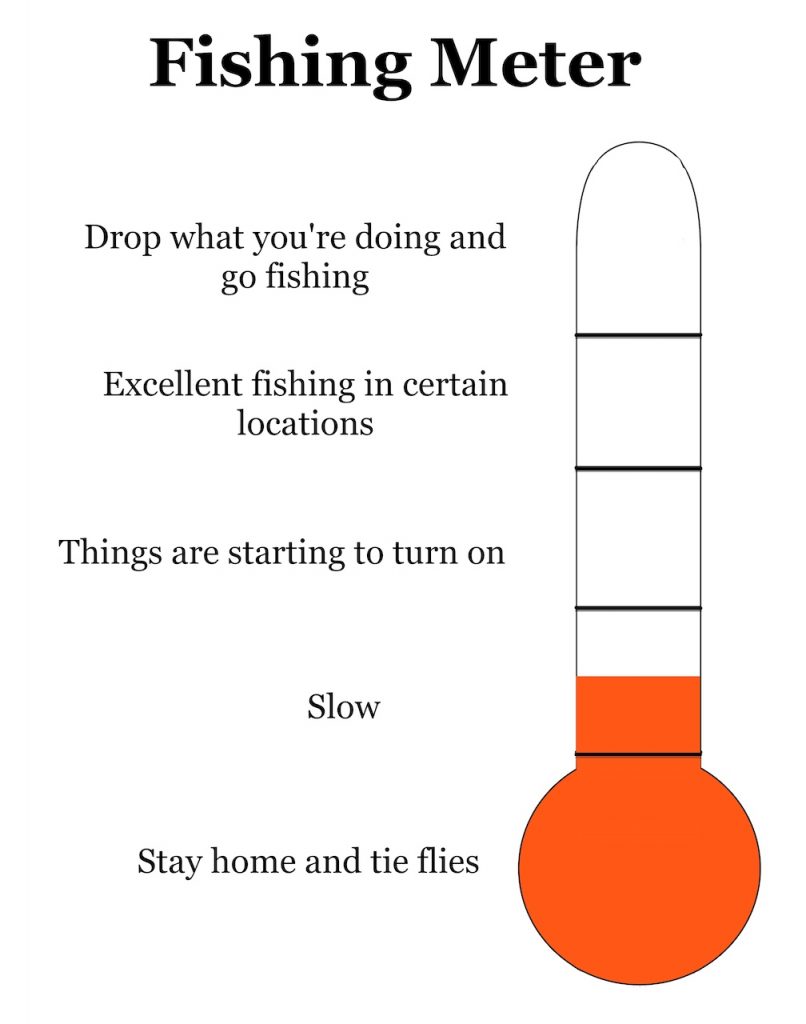
Water Levels
Little River: 1630cfs / 4.14 feet
Pigeon: 4130cfs / 5.14 feet
Oconaluftee: 2080cfs / 3.58 feet
Cataloochee: 552cfs / 3.82
Water Temperatures (approximate)
Low elevations: 48 – 52 degrees
Mid elevations: 46 – 50 degrees
High elevations: 42 – 47 degrees
Current Conditions
Well, we appear to be in a pattern… and not a very good one I’m afraid. As predicted in last week’s report, just as everything was getting back to normal, we got whopped by a major rain event on Thursday. That was followed by a cold front and another two day bout with heavy rain and storms over the weekend. The result is falling water temperatures and blown out streams.
Actual rainfall totals vary around the region. Middle Tennessee received approximately 7″ in a couple of days. Most of the areas around the mountains received 3-5″. Most streams came up 3-4′ and are still flowing 2-4′ above normal but falling. Not only are these conditions not very productive for most folks, they are just not safe.
In the summertime, water like this usually drops back down to normal in just a couple of days. But in the spring, when we usually get a lot more frequent, sustained rainfall, banks are already heavily saturated and there’s just nowhere for the water to go. So, stream levels tend to drop at a much slower rate. In short, I’d try to find something else to do for at least the next few days.
Projected Conditions
If we didn’t get any more rain, it would likely take about 4 or 5 days for streams to get back down to a “fishable” level – probably a full week to get down to normal. That puts us on track to see reasonable water by Thursday or Friday this week. The problem is we are expecting another 1 1/2″ of rain from late Tuesday night through Wednesday evening, which would easily spike those already high water levels back up 1 or 2′.
To add salt to the wound, Wednesday’s rain will be followed by a significant cold front. Thursday’s high temperature is only going to be in the 40’s. No matter how you slice it, the week ahead doesn’t look too promising. If you’re planning a trip, definitely keep an eye on those stream gauges – reading stream gauges.
Tips
In general, you want to seek out slower water and you want to fish the warmest water possible right now. Try to concentrate your efforts on the middle of the day, stick to the lower elevations and look for areas that get a little more sunlight. Finding Feeding Trout in Early Spring.
Hatches/Fly Suggestions
Quill Gordons are still popping off here and there. Again, it just depends where you are. I’ve been on pools where I only see two or three, and two pools up they’re coming off everywhere you look. They could show up at any time but mostly, we’re seeing the better hatches mid to late afternoon.
Standard Quill Gordon patterns should work well for topwater, so will a Parachute Adams – sizes #14 – #12. Everyone seems to have their favorite Quill Gordon nymph imitation. Mine is an olive Hares Ear. When the hatch is coming off pretty good, I always do best with an emerger, and my favorite is a Mr. Rapidan Emerger.
Blue Quills are coming off in better numbers in sizes #18 – #16. You’ll probably still run into some Blue Wing Olives, and there is always an assortment of dark caddis and stoneflies this time of year. A size #16 grey Elk Caddis will do the job for most of them. Otherwise, a lot of your favorite attractors should do fine. For early spring, I always like flies with peacock herl, Zug Bugs and Prince Nymphs in particular.
This week’s featured fly reflects the water conditions more than it does the seasonal hatches. If you can get on the water at all, it will be high and you’re going to want to fish larger, heavier flies that can get down quickly. Here are a few tips for fishing high water.
Featured Fly



